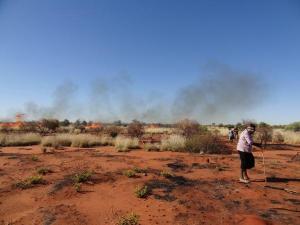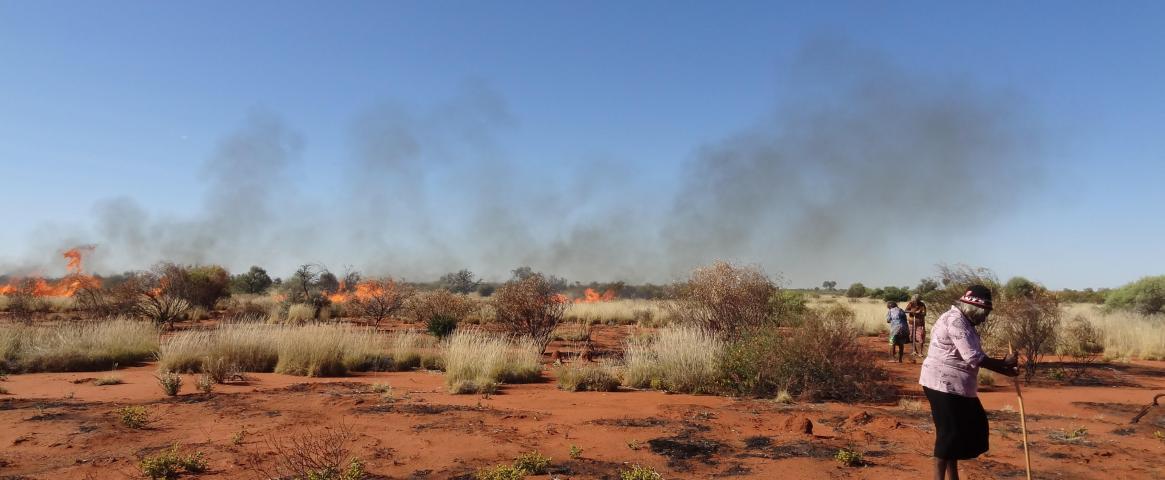By Betsy Ladyzhets

The ArchaeoEcology Project, an interdisciplinary collaboration of archaeologists, geologists, ecologists, and cultural anthropologists, aims to increase understanding of humans’ place in ecosystems around the globe. Project leaders described their efforts during a Feb. 17 talk at the American Association for the Advancement of Science annual meeting.
“What we’re doing as a group is compiling systematic data about the way humans interact with other species,” said Santa Fe Institute ecologist Jennifer Dunne, one of the project’s leaders.
That data is largely derived from archaeological records indicating which plants and animals human communities were utilizing at different points in their history, as well as how each organism was used. Through interdisciplinary collaboration, the researchers developed an analysis framework based on food web modeling — an ecological approach that maps out who eats whom. The approach also incorporates classification of non-food reasons humans may use their environments, including construction, ritual and companionship. These food web models and classification strategies, standardized across all six project locations, enable the scientists to quantify how people used and shaped the plants and animals around them. The findings may aid understanding of how past human societies have adapted to environmental pressures and yield ideas for modern solutions.
For example, Pennsylvania State University anthropologist Rebecca Bliege Bird used the ArchaeoEcology framework to study the Martu, an aboriginal tribe that lived in western Australia’s Great Sandy Desert for millennia before being pushed out by European colonists in the mid-20th century. She wanted to understand how the Martu fit into the food web of the desert ecosystem. Bliege Bird found that this community was in the center of their ecosystem, connected to many other desert species through their consumption of carnivores, herbivores and omnivores.
The Martu also engineered their ecosystem by setting small, periodic controlled fires, creating patchy vegetation in varied growth stages. This allowed many animal species to coexist among different types of plant cover and permitted humans to easily scout the area for food animals such as the goanna lizard. The Martu thus played the role of a “keystone species,” because their presence was foundational to many interspecies relationships.
“Humans … have the potential for interactions with a wider range of species than any other organism,” Bliege Bird said.
The expulsion of the Martu from the desert disrupted the established balance between humans and other species that depended upon them, causing a sharp uptick in animal and plant extinctions in the region. The loss of controlled fire, specifically, made the ecosystem more vulnerable to climate change and extreme events, including large and destructive wildfires.
In another application of ArchaeoEcology, anthropologist Jennifer Kahn at the College of William and Mary found that two Polynesian communities modified their farming practices to suit their disparate island habitats. Both the Gambier and Society tribes migrated from west Polynesia to unsettled eastern islands roughly 1,000 years ago, bringing cultivated crops and ecosystem engineering strategies from their mainland. Within about 200 years, however, each group adapted to the different ecosystems of their respective territories.
Society settlers on Mo’orea built terraces to protect their coastlines from erosion. Meanwhile, Gambier settlers on Mangareva realized that with limited farming land available, they could not afford to compete with pigs — an introduced, culturally important species — for fish, fruits, and vegetables. They thus cut pigs out of their diet, a move Kahn compared to Americans giving up hamburgers.
Ancient East Polynesians were not inherently conservationist, Kahn said, “But they learned to be so when their well-being depended upon it.”
Humans are deeply embedded in the web of species interactions and can shape these interactions not only to destroy plant and animal communities, but also to foster their continued survival.
Through examinations of a range of human communities across the globe, ArchaeoEcology scientists offer real-world analysis of the capacity for humans to develop ways of life that benefit their ecosystems.
“We’re barely scratching the surface of what we can and hope to do,” Dunne said.
Betsy Ladyzhets is a senior at Barnard College completing a dual degree in biology and English. She is an incoming research associate at Stacker Media and the former editor-in-chief of Bwog, a Columbia student news publication. Read more of her writing at betsyladyzhets.com and follow her on Twitter @betsyladyzhets.

